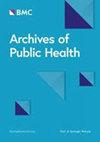Implementation strategies for decentralized management of multidrug-resistant tuberculosis: insights from community health systems in Zambia
IF 3.2
3区 医学
Q2 PUBLIC, ENVIRONMENTAL & OCCUPATIONAL HEALTH
引用次数: 0
Abstract
Decentralized management approaches for multi-drug-resistant tuberculosis (MDR TB) have shown improved treatment outcomes in patients. However, challenges remain in the delivery of decentralized MDR TB services. Further, implementation strategies for effectively delivering the services in community health systems (CHSs) in low-resource settings have not been fully described, as most strategies are known and effective in high-income settings. Our research aimed to delineate the specific implementation strategies employed in managing MDR TB in Zambia. Our qualitative case study involved 112 in-depth interviews with a diverse group of participants, including healthcare workers, community health workers, patients, caregivers, and health managers in nine districts. We categorized implementation strategies using the Expert Recommendations for Implementing Change (ERIC) compilation and later grouped them into three CHS lenses: programmatic, relational, and collective action. The programmatic lens comprised four implementation strategies: (1) changing infrastructure through refurbishing and expanding health facilities to accommodate management of MDR TB, (2) adapting and tailoring clinical and diagnostic services to the context through implementing tailored strategies, (3) training and educating health providers through ongoing training, and (4) using evaluative and iterative strategies to review program performance, which involved development and organization of quality monitoring systems, as well as audits. Relational lens strategies were (1) providing interactive assistance through offering local technical assistance in clinical expert committees and (2) providing support to clinicians through developing health worker and community health worker outreach teams. Finally, the main collective action lens strategy was engaging consumers; the discrete strategies were increasing demand using community networks and events and involving patients and family members. This study builds on the ERIC implementation strategies by stressing the need to fully consider interrelations or embeddedness of CHS strategies during implementation processes. For example, to work effectively, the programmatic lens strategies need to be supported by strategies that promote meaningful community engagement (the relational lens) and should be attuned to strategies that promote community mobilization (collective action lens).分散管理耐多药结核病的实施战略:赞比亚社区卫生系统的启示
耐多药结核病(MDR TB)的分散管理方法已显示出患者的治疗效果有所改善。然而,在提供下放的耐多药结核病服务方面仍存在挑战。此外,在低资源环境下的社区卫生系统(CHS)中有效提供服务的实施策略尚未得到充分描述,因为大多数策略在高收入环境中是已知和有效的。我们的研究旨在阐明赞比亚在管理 MDR TB 时所采用的具体实施策略。我们的定性案例研究共进行了 112 次深入访谈,访谈对象包括九个地区的医护人员、社区卫生工作者、患者、护理人员和卫生管理人员等不同群体。我们使用 "实施变革的专家建议"(ERIC)汇编对实施策略进行了分类,随后将其归纳为三个 CHS 视角:计划视角、关系视角和集体行动视角。计划性视角包括四种实施策略:(1)通过翻新和扩建医疗设施来改变基础设施,以适应 MDR 结核病的管理;(2)通过实施量身定制的策略来调整临床和诊断服务,使其适应具体情况;(3)通过持续培训对医疗服务提供者进行培训和教育;(4)使用评估和迭代策略来审查计划绩效,这涉及质量监测系统的开发和组织以及审计。关系透镜战略包括:(1) 通过在临床专家委员会中提供当地技术援助,提供互动式援助;(2) 通过发展保健工作者和社区保健工作者外联团队,为临床医生提供支持。最后,主要的集体行动透镜策略是让消费者参与进来;分散策略是利用社区网络和活动增加需求,以及让患者和家庭成员参与进来。本研究以 ERIC 实施战略为基础,强调在实施过程中需要充分考虑社区保健服务战略的相互关系或嵌入性。例如,为了有效发挥作用,方案透镜策略需要得到促进有意义的社区参与(关系透镜)的策略的支持,并应与促进社区动员(集体行动透镜)的策略相适应。
本文章由计算机程序翻译,如有差异,请以英文原文为准。
求助全文
约1分钟内获得全文
求助全文
来源期刊

Archives of Public Health
Medicine-Public Health, Environmental and Occupational Health
CiteScore
4.80
自引率
3.00%
发文量
244
审稿时长
16 weeks
期刊介绍:
rchives of Public Health is a broad scope public health journal, dedicated to publishing all sound science in the field of public health. The journal aims to better the understanding of the health of populations. The journal contributes to public health knowledge, enhances the interaction between research, policy and practice and stimulates public health monitoring and indicator development. The journal considers submissions on health outcomes and their determinants, with clear statements about the public health and policy implications. Archives of Public Health welcomes methodological papers (e.g., on study design and bias), papers on health services research, health economics, community interventions, and epidemiological studies dealing with international comparisons, the determinants of inequality in health, and the environmental, behavioural, social, demographic and occupational correlates of health and diseases.
 求助内容:
求助内容: 应助结果提醒方式:
应助结果提醒方式:


